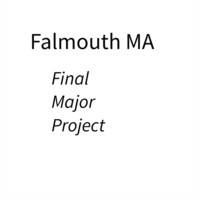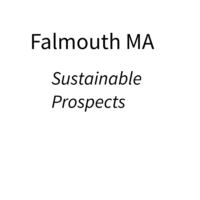Sarah Thomson Head of Art Production, One Unilever at Ogilvy
Sarah is Head of Art Production at One Unilever at Ogilvy in London. Prior to this she was Head of Art Production at Fallon and an Art Buyer at DDB London and AMV BBDO. Before working as an Art Buyer, Sarah was Gallery Manager at the Zelda Cheatle Gallery, and worked for Nadav Kander and Photographer’s Agent, Catherine Collins. She has judged numerous Photography and Illustration Awards, and advised, talked and contributed to various books on the subject of advertising, photography and illustration.
I made a series of notes from Sarah’s presentation . which are recorded below:
During the first part of Sarah’s talk she discussed the importance of the photographer having a clear definition of who they are:
- What genre of photography is your area of focus
- Can you articulate your personal vision photographically
- All show your best work
- Show work that defines you as a photographer
- Include that show how you work (behind the scenes)
- Put your main themes at the front
- Other work can be included as thumbnails at the back
Reflection: Based on my current project I view myself as a visual storyteller who uses the landscape a the backdrop to those stories. Though I have lifestyle and portrait images in my portfolio.
Creating a Portfolio
- When creating a portfolio only show your best work better to have 20 strong images than 30 images of average quality.
- Take an iPad to show moving images. In the evolving world of commercial photography it is now important to show a creative capability for moving images.
- Personal projects can help underpin a commercial practice with many professional photographers combining both
Reflection: My current portfolio does not include moving image clips to show work I have created in video format in the past. i should review some of my video footage and if I conclude the work is strong enough I could create a short show real from that work.
How to get going?
- Stay passionate about your work
- Keep you website up to date
- When you take a assignment consider the commercial benefits beyond that specific assignment. If it will complement your portfolio and allow you to take on bigger jobs it might make sense to accept the assignment at a lower rate than your normal rate.
- Ensure you are comfortable you can deliver on the day for any commercial assignments
Stay Visible
- Pitch work
- Use social media: Blog, Tweet (link and reference members of your team)
- Use creative networks
- Enter competitions
Reflection: I am actively posting images on social media and I am entering competitions on a regular basis so I certainly ticking a number of boxes within this space. What I need to consider is more networking activities and working on building a team for commercial work though this is probably something which needs to take a back seat until after the MA.
Get Noticed
- Remain focused on your work and don’t get sidetracked
Approach
- Contact people via email initially, Use LinkedIn
- Email to arrange a meeting
- Research sources: AoP, Campaign, FileFx
- Search advertising credits to find names of Art Buyer, Art Producers, Integrated Producers (today the role of identify photographers for a campaign is done by a number of different roles.)
- Take cards when meeting art directors as they provide a visual memory to your work.
- Consider using MOO custom cards that allow you to put multiple images on business cards
- Create an on-line version for those who want a digital version
- Once you have a contact create a newsletter to keep contacts up to date on your work
Reflection : I have business cards and when I introduced myself to Simon Roberts and Edmund Clark i handed them samples of my work to create a visual connection.
Agents
- For some people having an Agent to represent you can reduce the time spent on developing and following up on leads
- Use an Agent to secure introductions and expand your contacts list
- Even having an agent on your side it is important to stay in contact with them and ensure they are continuing to work for you
- At the start of the engagement agree the commission percentage for securing commissions
- Provide them with up to date work to make their task of securing work easier
- Make older work visible as this could also be a source of commissions
Reflection: Based on m y strategy of operating a commercial practice alongside my current employment engaging an agent might be a useful strategy to allow me to focus on the creation of work rather than following up on leads.
Production
- Build a production team so that when you undertake bigger commercial projects you have a team you can call upon to ensure you are able to deliver the required project
Working to a creative brief
- Show layouts so that creative understand how you will interpret the brief
- Take responsibility for the brief
- Read all the details of the brief to ensure you have correctly understood the brief
- Speak to the creatives who are likely to have spent months working on the brief
- Learn about the brand and its values to ensure the brief is interpreted correctly and will reduce the risk of going against established brand rules
- Explain how you plan to shoot the job. This provides to the creatives that you have understood the brief
- Stay calm and evolve with the brief
- Stay within the overall budget
How to work with Creatives?
- Be collaborative after all it’s a team deal
- Shared responsibility with the creative
- Contact with the end client is likely to be via the Art Producer
Pre-Production Meeting
- Check all of the details with in the brief
- Walk through the different elements with the creatives
- The PPM is the time to convince the client that you can deliver
- The pre-production meeting can be viewed as a piece of theatre where everyone has a role to play
On Set
- Work with the creatives and shoot the layout
- Keep everyone happy
- Deliver on the day
- This is the day that the magic happens
- Coffee and food help keep everyone happy
Usage
- Agree fees and confirm usage which will influence the fees
- Some clients will ask for access in perpetuity which in essence like owning the copyright as it limits the future usage of an image
- Ensure you confirm with the Art Buyer that you can use the images for your own portfolio to allow you to pitch for future work



